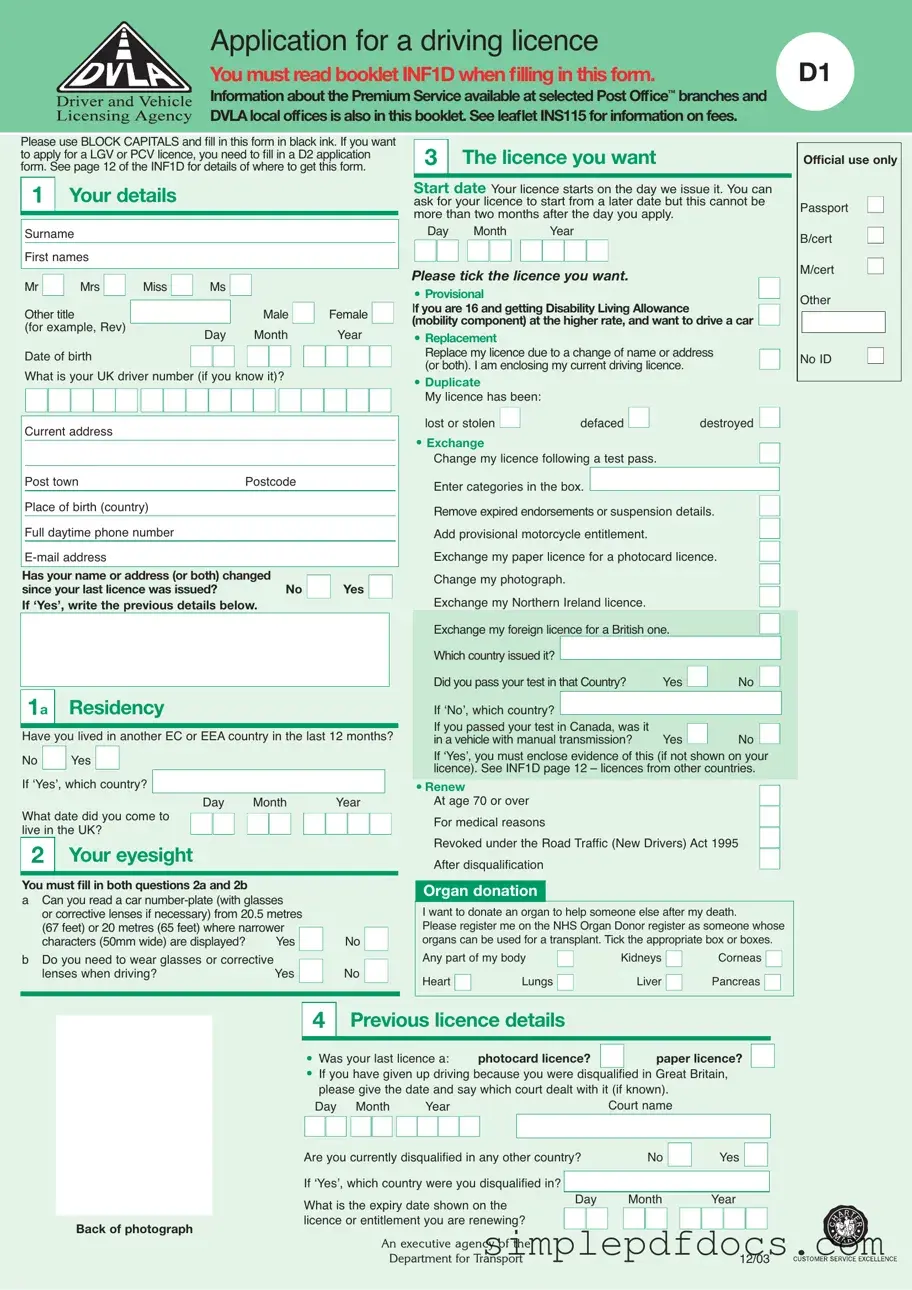The D1 DVLA form is an essential document for anyone looking to apply for or update their driving licence in the UK. This form covers a range of key information, from personal details to medical history. It requires applicants to provide their full name, date of birth, and current address, along with their UK driver number if known. The form also includes sections to confirm residency status and eyesight capabilities, ensuring that applicants meet the necessary criteria to drive safely. Additionally, individuals can indicate the type of licence they wish to apply for, whether it's a provisional, replacement, or exchange of an existing licence. For those with medical conditions that may affect their ability to drive, there are specific questions to assess fitness to drive. It's important to follow the instructions carefully, as any incomplete or incorrect information may delay the application process. Moreover, applicants must provide proof of identity and may need to submit additional documents depending on their circumstances. Understanding these aspects can simplify the application process and help ensure a smooth experience when obtaining or renewing a driving licence.
